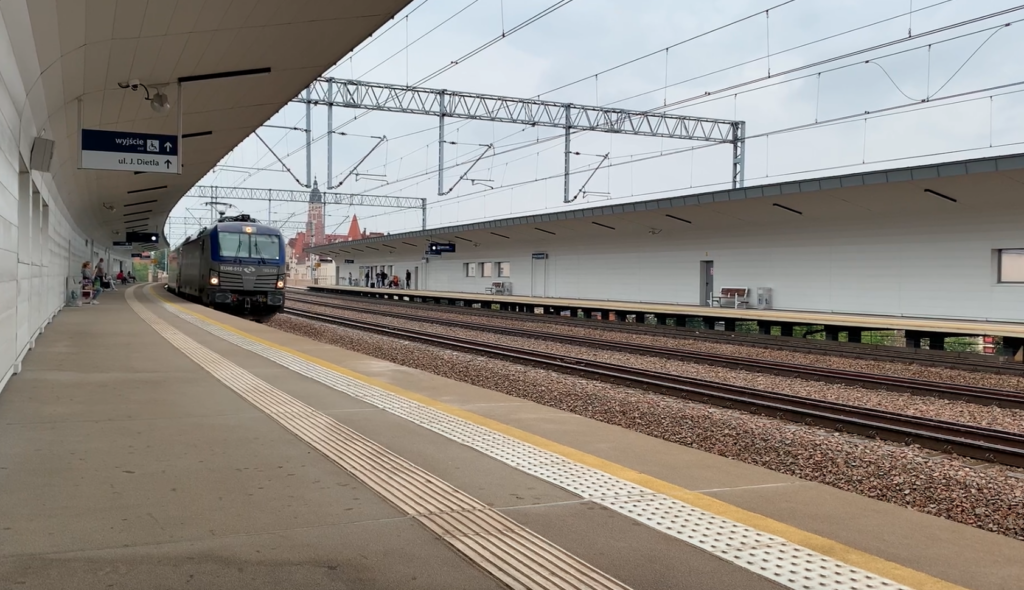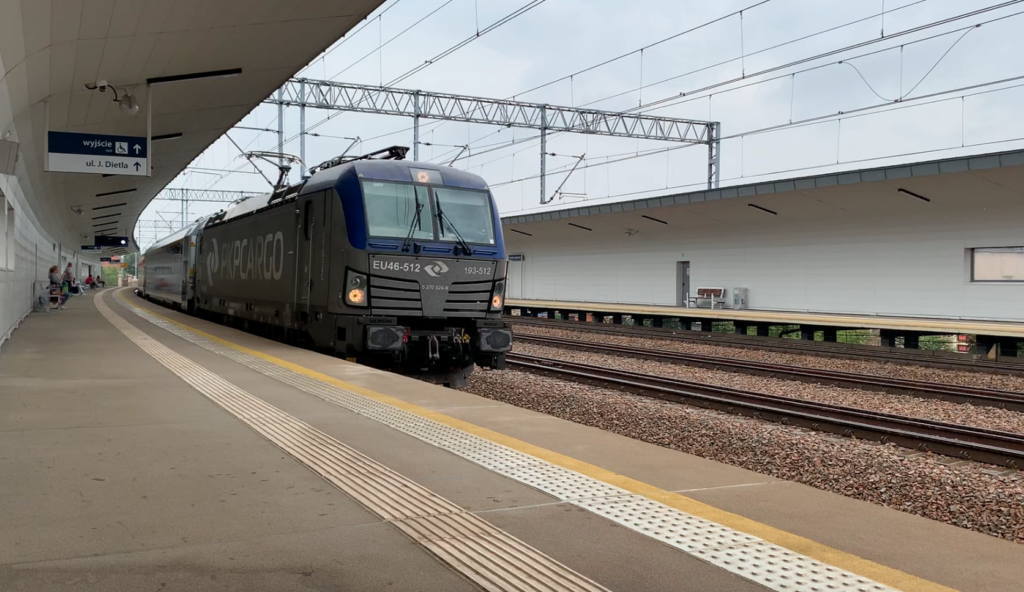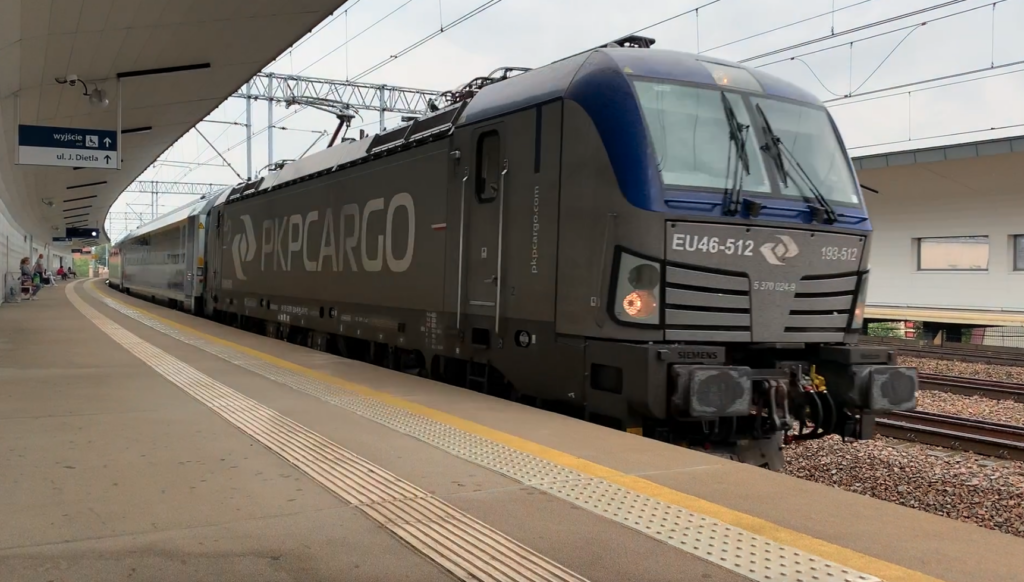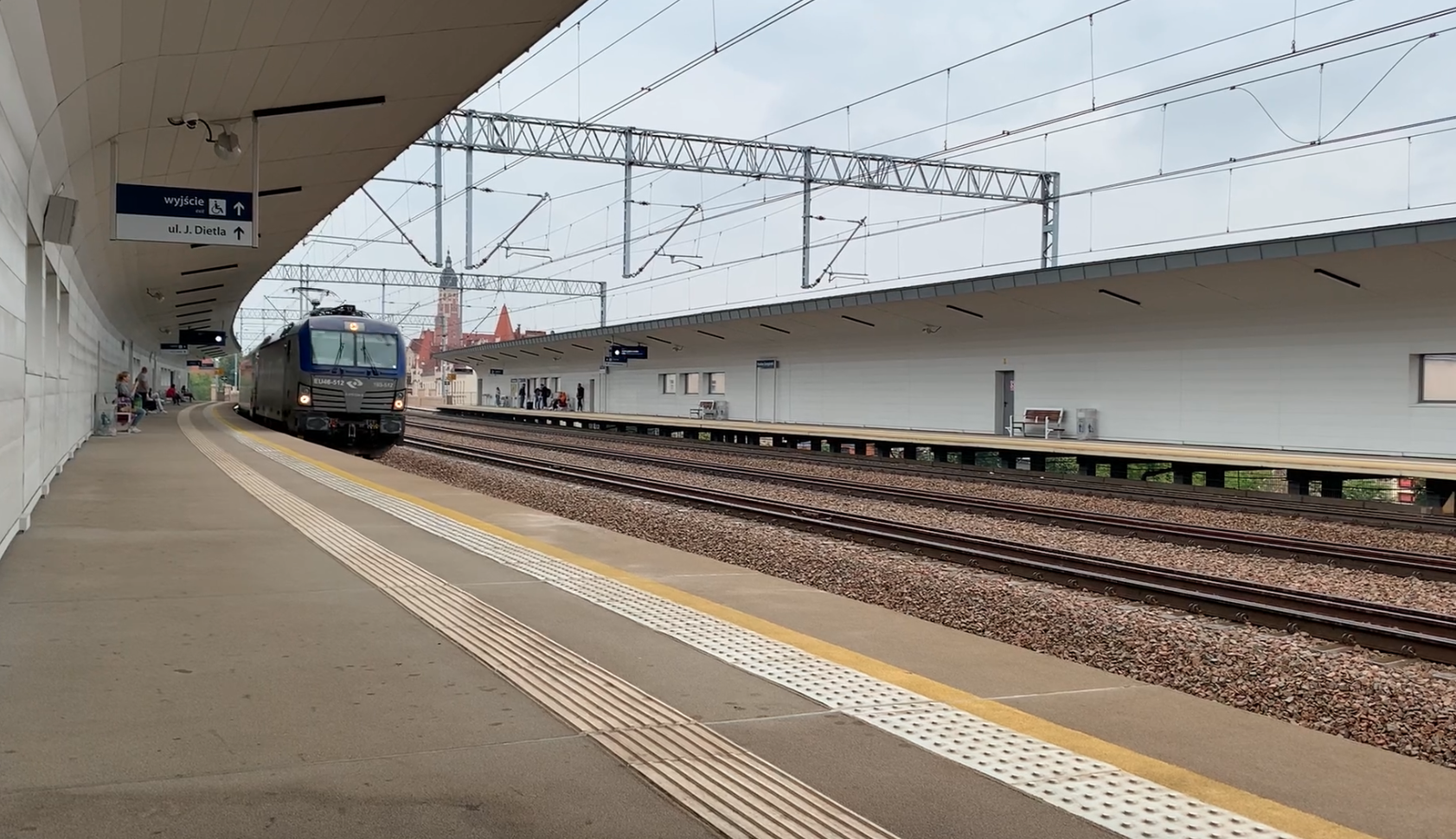Kraków 2025-08-27
What is the Siemens Vectron EU46?



The EU46, or Siemens Vectron MS (Multi-System), is a series of universal multi-system electric locomotives manufactured by Siemens Mobility since around 2010. In 2012, the locomotive was presented in Poland, including at Kraków Płaszów station. Following this presentation, several units were purchased by PKP Cargo.
The Siemens Vectron is a family of locomotives derived from the Siemens EuroSprinter electric locomotive family. Siemens Vectron locomotives are designed to haul freight and passenger trains, with a maximum speed of 160 km/h or 200 km/h, depending on the version. The main idea behind these locomotives was their multi-system design, meaning they could operate trains with different electrical currents on networks, meaning international trains. Modular design was also a key consideration. Models include: a multi-system locomotive (87 tonnes gross vehicle weight, 6.4 MW), a high-power AC locomotive (85 tonnes gross vehicle weight, 6.4 MW), a medium-power AC locomotive (82 tonnes gross vehicle weight, 5.6 MW), a 3000 V DC locomotive (80 tonnes gross vehicle weight, 5.2 MW), and a diesel locomotive (88 tonnes gross vehicle weight). The basic dimensions of the Siemens Vectron locomotive are: length 18.98 m, width 3.01 m, height 4.25 m, wheel diameter 1.25 m. Bo’Bo’ axle arrangement.
The Siemens Vectron locomotive is multi-system, allowing it to operate on various traction networks in Poland, the Czech Republic, Slovakia, Austria, and, of course, Germany. Its modular design allows it to meet almost any operator’s requirements. The locomotive was intended to achieve an annual mileage of around 150,000 km, but this proved difficult due to the fragility of some components. However, the locomotive is truly versatile. In freight transport, it hauls trains carrying containers, tanks, hard coal, coke, slag, steel, grain, and more. In passenger transport, it hauls passenger trains consisting of up to 12 passenger cars.
In September 2015, PKP Cargo ordered 15 Siemens Vectron locomotives with an option for an additional five. The first order was under the Septyper 2015 contract. The contract value was PLN 315 million. The first three (EU46-501, -502, and -503) arrived in Poland in January 2016. Each locomotive was approved for operation in Poland and five EU countries. In 2019, the option was exercised and five more locomotives were purchased. In 2022, another five locomotives were purchased, with full service coverage for eight years. In total, PKP Cargo has 25 Siemens Vectron locomotives. Due to locomotive shortages at PKP InterCity, Siemens Vectron locomotives were leased from PKP Cargo to operate long-distance trains. This included the EU46-516 locomotive. The EU46-516 demonstrated that these units can reach speeds of up to 160 km/h, the same as the NEWAG EU160 locomotive.
Main technical parameters: Siemens Vectron: Axle configuration: Bo′Bo′. Length: 18.98 m. Width: 3.01 m. Height: 4.25 m. Kerb weight: 80,000 – 87,000 kg, depending on the version. Maximum axle load: 22,500 kg. The locomotive is a multi-system MS and can operate on the following traction systems: 1.5 kV DC, 3 kV DC, 15 kV AC (16.7 Hz), and 25 kV AC (50 Hz). The choice of system depends on the customer. The locomotive can have two or four current collectors. The locomotive has four asynchronous (three-phase) traction motors, most commonly the Siemens 1TB2723-0GA02 model. In the high-current (AC) version, the locomotive has a power output of up to 6.4 MW (~8,705 hp). In the 3 kV DC version, the locomotive has a power output of up to 5.2 MW (approximately 7,070 hp). Maximum speed is 160 km/h. The manufacturer offers modified versions for speeds of 200 km/h. The locomotive’s tractive effort is 300 kN.
Externally, the Siemens Vectron locomotive is similar to the Siemens EuroSprinter Traxx. However, the interior layout is different. The locomotive’s design is modular. The driver’s cab is located at both ends of the body. A corridor runs through the center, and components are located on the sides. Each axle is equipped with a single, three-phase asynchronous traction motor. The transmission features a hollow shaft drive and a flexible disc clutch. It’s worth noting that the locomotive features braking energy recuperation. Customers can choose from several equipment options depending on their needs: power supply system, maximum speed, and power. Electric locomotives can be equipped with an additional 180 kW diesel engine, designed for shunting on non-electrified sidings. Diesel locomotives are designed for a maximum speed of 160 km/h, and their overall length is greater than the electric versions. The diesel locomotive has two side aisles and a sixteen-cylinder V-MTU engine.
In 2021, Siemens Mobility built its 1,000th Vectron locomotive. Siemens Vectron locomotives are in service in 20 countries, including Poland. Siemens Mobility provides full locomotive servicing for up to 20 years.
PKP InterCity leased locomotives from other carriers and operators during the 2023–2024 period, primarily PKP Cargo, as well as companies such as LokoTrain and CargoUnit. Why was this necessary and what solutions were implemented? PKP InterCity declared that it did not have sufficient operational rolling stock to meet the 2023/24 RJ timetable. This was due to delays in periodic inspections at level P4. There were also no offers for locomotive inspections at levels P4 and P5. Another reason was the increase in PKP InterCity’s transport offerings, unprecedented in recent decades. In April 2024, PKP InterCity was unable to use as many as 30% of its locomotives. Regarding railcars, as many as 40% of its passenger cars were unavailable. Locomotive lease offers from other carriers were not received in sufficient numbers. For example, a tender for the lease of 10 locomotives had to be cancelled because only one offer was received. In May 2024, PKP InterCity signed a contract with PKP Cargo for the lease of locomotives (worth approximately PLN 4.57 million) to provide traction during rolling stock shortages caused by delayed P4 repairs. Between May and September 2024, 10 EU07 locomotives and two Siemens Vectron locomotives were leased. Additional locomotive bidders included LokoTrain and CargoUnit. Each of these companies leased two Siemens Vectron locomotives. In total, PKP InterCity has leased 16 locomotives until the end of September 2024.
Despite this, PKP InterCity looked to the future with optimism, as NEWAG was producing additional EU160 and EU200 locomotives. In December 2023, PKP InterCity received the first Griffin EU160 locomotive, as part of a contract for the delivery of 20 locomotives from NEWAG. At the end of December 2023, the contract for locomotives from NEWAG was for 46 locomotives. The contract value was PLN 954 million, and deliveries were to be completed in 2024-2025. The order was increased to 96 locomotives. By July 2025, NEWAG had delivered 76 locomotives. Additionally, PKP InterCity signed a contract for the delivery of 15 EU200 locomotives from NEWAG, with a total value of approximately PLN 388 million gross. By the end of 2024, all 15 locomotives had been delivered. A contract was also signed for the delivery of another 63 EU200 locomotives, with an option for an additional 32 vehicles. Completion is expected from 2026, and the contract value is approximately PLN 2.3 billion.
Siemens Vectron EU46-512.
EU46-512 EVN number: 91 51 5 370 024-9 (PL-PKPC). Serial number 22033. Manufactured in 2016. On May 9, 2016, the locomotive left the Siemens München-Allach factory and was sent for factory tests. On September 13, 2016, the locomotive was handed over to PKP Cargo. The locomotive was painted gray with red elements on the front. On October 9, 2021, the livery was changed from red to navy blue. In 2024, the locomotive was assigned to periodic operation at the PKP InterCity Central Plant in Warsaw. In April 2025, the locomotive underwent a level P4 repair.
Written by Karol Placha Hetman
